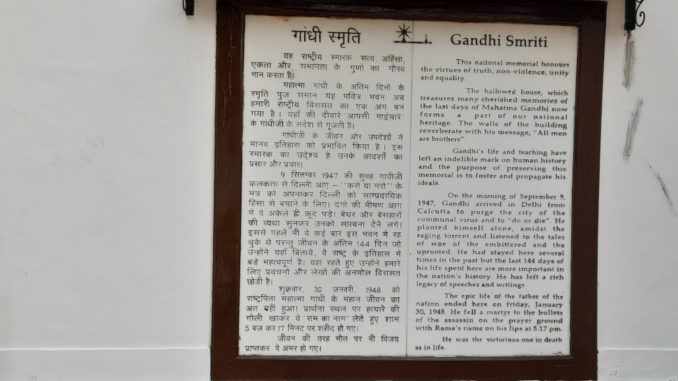
© Colin Cross, Going Postal 2023
As I’ve said before during this series of posts, following my recent trip to The Sub Continent, India is a land of often stark contrasts. Its population (official figure) is approaching 1.5 billion people, nobody really knows how many are living in Delhi and its environs, but it’s well over 33 million. There’s a national minimum wage of around £650 per year (for directly employed), although those employed as “day workers” will often be paid less than this. Many people in rural areas still live a lifestyle based on subsistence level agriculture, where they eat what they grow and money as a physical manifestation is virtually non existent. The average salary for the directly employed is around £3,800 per year. In 2019 one directly employed senior executive was paid £15 million. Contrasts indeed. The largest growing group of “earners” in the country is loosely referred to as “The Middle Class” who command salaries between around £5,000 and £30,000 a year. All a far cry from the India Gandhiji grew up in and helped to liberate from the yoke of British Imperial colonialism. Don’t get me wrong, without Britain I don’t doubt India wouldn’t exist as we know it, it’d possibly be a nation of loosely united states, each working together with neighbours based on political and/or religious persuasion, but who really knows? We came, we saw, we fought, we conquered, we battered, we enslaved, we educated, we built infrastructure and, on the odd occasion we even massacred before being forced out, mainly by an old man in a dhoti, Although the evidence of our having been there is everywhere, in the language, the buildings, the political system, the railways (loosely) and, to a certain extent, in the pursuit of westernised lifestyles. Lifestyles which the great non violent revolutionary and political ethicist who was Mahatma Gandhi would have frowned upon and undoubtedly spoken out against. He had little time for the trappings of “civilisation” once he’d chosen (or received from God) his path.
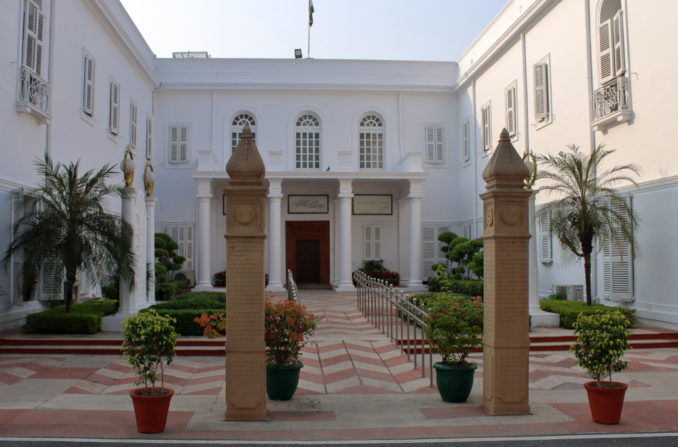
© Colin Cross, Going Postal 2023
The life of Mohandas Karamchand (Mahatma) Gandhi is well documented, as is his death, but his “legacy” (if such a thing even exists), isn’t easy to get a handle on. From the time he gave up the pursuit of earthly “pleasures” until his death, although he (I believe) enjoyed his “fame” to a certain extent, his focus was on the spiritual, both within himself and within those he saw as his people. His political activism (as central a it was to become to his existence) was less important to him than his worship of “The One God”. He believed that worship was central to his battle for a united independent India. Furthermore, he believed whatever “religion” the individual chose to follow, the “One God” for all was the defining tenet of his beliefs. I could go on, but that isn’t the point here. Gandhi inspired admiration and reverence in some politicians of the day, Jan Smuts, who Gandhi had “bested” over banned marriages, forced labour and unfair taxes called him a “saint” when he left South Africa in 1914, but hoped he would never return. In 1942, when Gandhi called upon Britain to finally quit India Smuts warned Churchill not to underestimate him (Gandhi), Churchill was dismissive at the time, believing his own (selfish) spirituality held more weight. When Smuts told Churchill “He is a man of God, he appeals to the spiritual, something which you’ve never done” Churchill replied dismissively “I’ve made more Bishops than St. Augustine”. The decision to use “faith” as lever to subvert the drive for an independent India, by enforcing partition along religious lines wasn’t Churchill’s idea, The Raj had partitioned Bengal along Hindu-Muslim lines in 1905, but he fully bought into it, he was, after all, a politician and a great believer in The Empire.
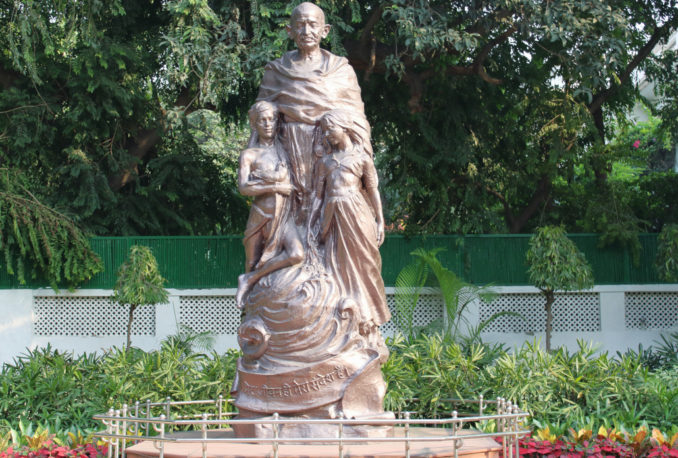
© Colin Cross, Going Postal 2023
As much as Gandhi’s standing grew within the wider community of most of Hindu India and much of “peaceful” Islamic India, his enemies, both Indian and British, sought to undermine him and subvert his “non violent” revolution for their own ends. People flocked to hear him speak and a great many who had at one time seen violent uprising as the only way to achieve independence came to believe that the slow but resolute progress his movement was making, in the face of much provocation, was the best way of going about achieving the ultimate goal. Gandhi fasted throughout his later life, using the technique as both a spiritual/religious penance and highly successful political weapon. He worshipped his mother as a young man and he’d been impressed and worried in equal measure by her own devotion to God and her stoicism in the face of much adversity. In effect he taught himself, over the years, to survive on only what he felt his body needed.
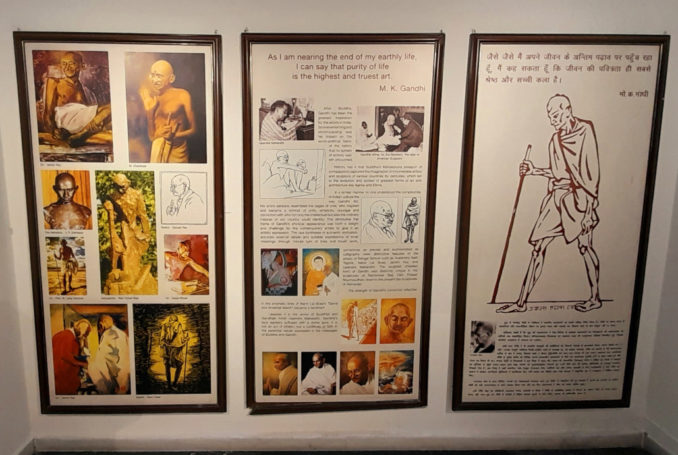
© Colin Cross, Going Postal 2023
As early as 1905 Gandhi had written, in the August edition of Indian Opinion; “The growing spirit of toleration towards all religions is an happy augury for the future”. Some would see this view as naive, yet he held true to it for as long as he drew breath. Other voices, backed by the British (who were intent of fomenting tensions within India) were being heard though and chief amongst these was a close political colleague and confidante of Gandhi, Muhammad Ali Jinna. Jinna was an urbane man, a drinker and lover of fine suits, who originally agreed with the premise of a united, multi faith India where all religions would be of equal standing, worshipers could come together in their love of God and all Indians would be of equal status, no matter what religion they followed. From 1920 onwards, when he decided the path of “satyagraha” (non violent civil resistance) was not viable as a political philosophy his relationship with Gandhi deteriorated to such an extent that by 1940 they were barely on speaking terms. Jinna, took advantage of the imprisonment of Gandhi and Nehru during the war years to align himself with and garner further support from Britain for partition. Jinna, the first Governor General of Pakistan is revered in that country as its greatest ever leader, although Hindus would, I imagine, view his career very differently.
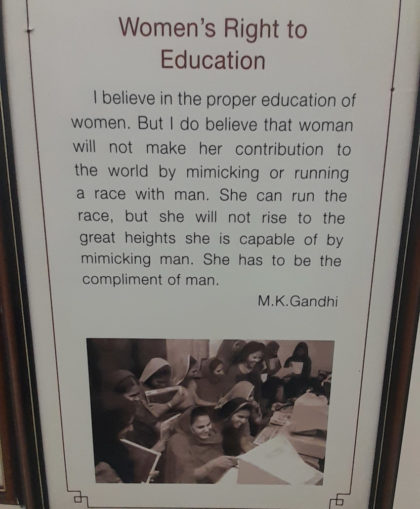
© Colin Cross, Going Postal 2023
As much philosopher as politician, Gandhi was always comfortable in the company of women, he had married his wife when he was thirteen and she was fourteen and although in later life he became celibate and was said to have disliked his infrequent lustful thoughts, they had five children, four of whom, all sons, survived to adulthood. His views of women were quite radical for the times in which he lived, he believed women in many ways to be the equals of men and in some ways to be the betters. Everything to him was a complimentary partnership, but women were expected to clean latrines, in much the same way as men were required to take up work, such as spinning of thread, which had been traditionally the preserve of females. It’s ironic in a way that, at least from what I saw, there are as many Indian peasant women working as labourers on Delhi building sites as there are men. In a way, I’m sure Gandhiji would have approved.
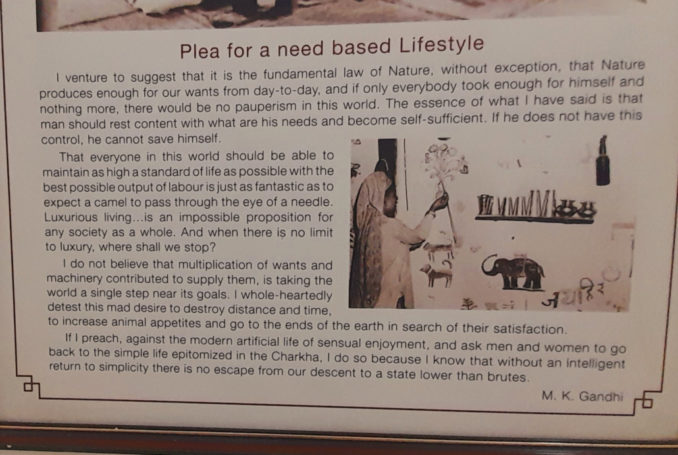
© Colin Cross, Going Postal 2023
The images used to illustrate this somewhat rambling epistle were taken during a visit to the house (now a small museum) called Gandhi Smitri where Mahatma passed his final days before his assassination on January 30 1948 https://www.gandhismriti.gov.in/. He was, by this time a frail old man who had been much weakened by his final “fast unto death”, which he undertook on the 13th of January, in an effort to bring to an end the inter faith rioting and killings which he’d done so much to try to forestall during his fight for an independent India. The rioting mostly ceased by January the 19th and the Mahatma was convinced to give up the fast. He did so, believing once again that his willingness to sacrifice himself for the good of all had been effective. I suppose the fact there are no armed guards at this particular site pays homage to the life of Gandhi, there’s a high military presence throughout the city.
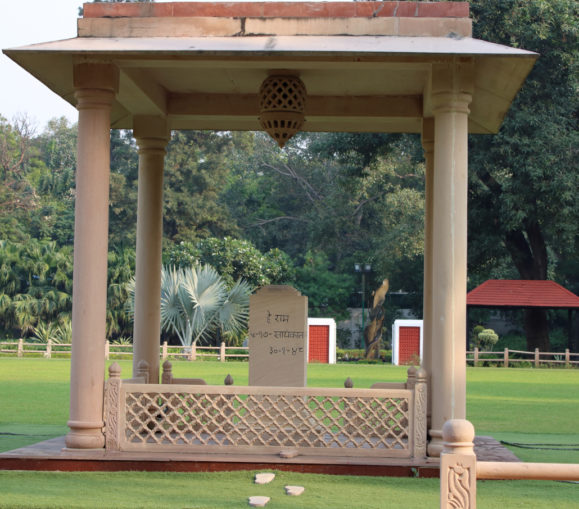
© Colin Cross, Going Postal 2023
Eleven days after he’d given up his fast Gandhi was about to lead a multi faith prayer meeting in the grounds of what is now Gandhi Smitri when he was shot three times, at point blank range, by a high caste Brahmin Hindu nationalist called Nathuram Vinayak Godse. Godse and his fellow conspirators believed the Mahatma had been too accommodating to Pakistan (and Jinna) during partition and, in doing so, had betrayed his fellow Hindus. He was 78 and had spent almost sixty years of his life preaching tolerance and love whilst acting as a champion for the disenfranchised Indian people, both in South Africa and in their homeland. He’s called the “Father Of The Nation” and his name is revered by a great many people, but, outside of his great political achievements and his one huge failure (partition) has he left an abiding legacy in the way Indian people see themselves and in the way they act, on a daily basis?
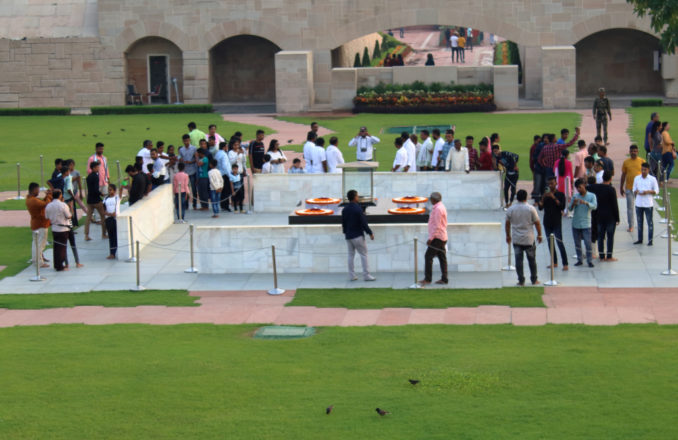
© Colin Cross, Going Postal 2023
When we arrived in Delhi it was Diwali and people were everywhere, in their thousands, taking advantage of the holiday and the fine weather to celebrate this most important of Hindu festivals by visiting parks, temples and other places of significance to them and their beliefs. Queues were long and much colourful finery was on display. Here, more than anywhere else we visited, was clear evidence of the rise of a burgeoning middle class with disposable income and a desire to spend. The Rohinga and other “untouchables” who live on the streets and in the underpasses and the day labourers were nowhere in evidence, but everyone in this “new” class of people has the latest mobile phones with which they constantly photographed each other (and any western women they could) and, especially where the younger adults are concerned, a desire to show off their “fashionable” attire.
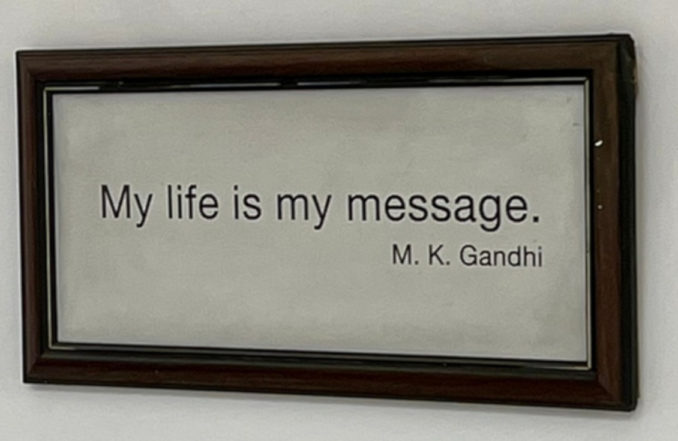
© Colin Cross, Going Postal 2023
The only place we had to ourselves, on both the days we spent “sightseeing” in Delhi, was Gandhi Smitri, the place where The Mahatma made his final sacrifice and which is considered to be one of the most important sites in India’s historical struggle. I wasn’t disappointed to be able to wander around at my own pace and take in, in the short time I had, the calm atmosphere of the place and digest, undisturbed, some of Gandhi’s words of wisdom. I was surprised there weren’t more people there, but maybe I shouldn’t have been. We live in a brave new world, after all.
Next Time; The Food, The Drink, Reflections, Maybe A Bit Of Hooptedoodle
© Colin Cross 2023



